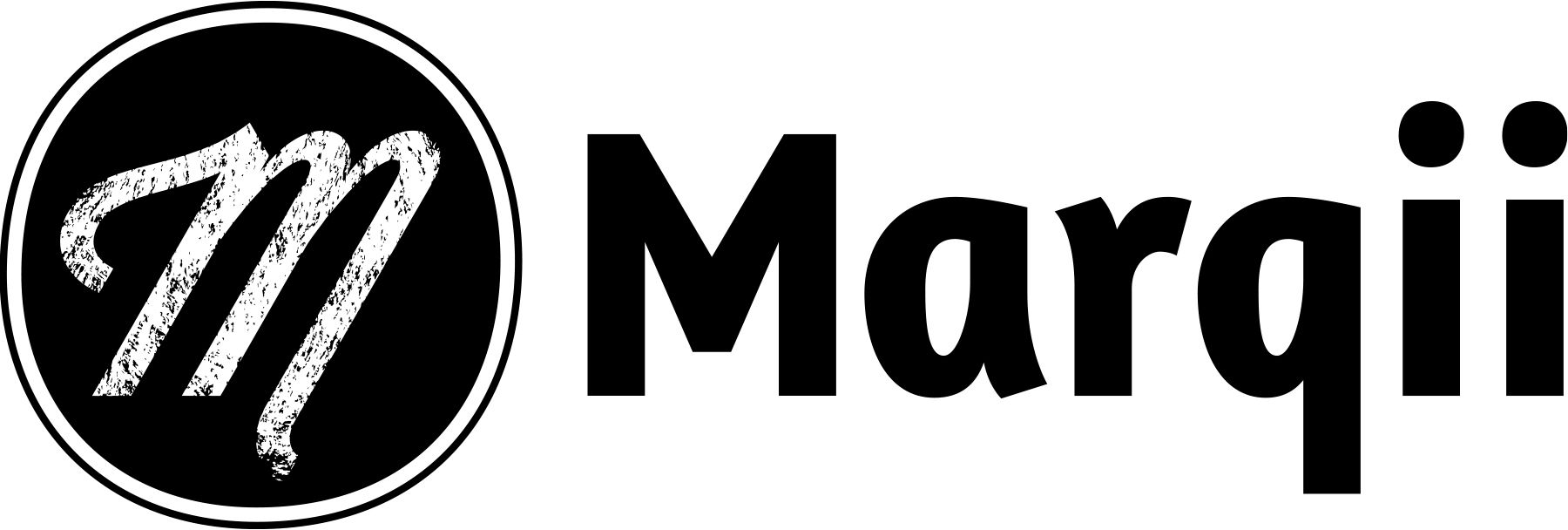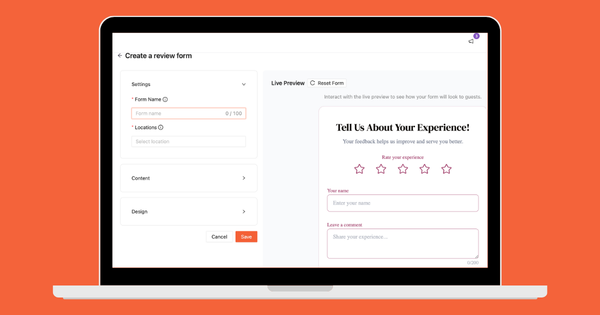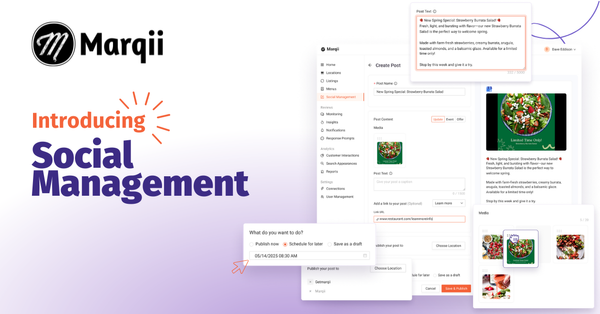Building Your Restaurant Tech Stack
Today, we’re diving into the essential components of a restaurant tech stack and what you should consider when choosing the right tools for your business. Before we get started, let’s first understand what tech in restaurants includes and how it can help you grow your business.
What does tech in restaurants mean?
When we talk about tech in restaurants, we're referring to the digital tools and systems that help you manage and streamline your daily tasks. From taking orders to handling reservations, inventory management to customer feedback, and everything under the big marketing umbrella, the right technology can transform your business into a well-oiled machine. Building a tech stack from scratch can be a bit tricky if you don’t know where to start.
Luckily, we got you.
What is your source of truth?
The first step to building your tech stack is identifying your "source of truth." This is essentially the central hub where all your critical data lives. It’s the place you turn to for accurate, up-to-date information about your guest data and operations. This information usually includes:
- Menu Items and Pricing
- Business info (hours, contact info, and location addresses)
- Guest Data
- Visits
- Payments
- Order History
For most restaurants, this will be your POS (Point of Sale) system or online ordering system. A strong POS not only processes transactions but also integrates with other systems, giving you a real-time view of your business. Some popular POS systems include GoTab, Toast or Square.
When your POS integrates with your inventory management, delivery systems, and menu management software, you save time, reduce errors, and make better decisions.
Keeping your “source of truth” up to date will define your success as you begin to add restaurant technology to your business.
Integration is Key
As you build your restaurant tech stack, integration is a big priority. Once you have decided what your source of truth is, you need to make sure that as many platforms as possible integrate with that source of truth in some way so that you can tie as much data together as possible.
Of course, some critical tech solutions will stand on their own - for example, employee scheduling software may not need to tie into your POS.
But the goal is to have your systems talking to each other so you don’t have to log into fifteen different pieces of software. You essentially want to manage one (your source of truth) and let the rest integrate together.
What to Consider
There are so many different areas of your business that restaurant technology can help with. Shawn Walchef at Cali BBQ Media has put together a wonderful graphic to showcase his restaurant tech stack and the areas of his business each system applies to:
You can see that at the center of it all is his POS system, Toast. That is the source of truth that systems like Marqii, UberEats and more pull from to automate important updates.
Let's explore the different areas of your restaurant where restaurant technology can make a big difference.
Content
In the age of social media, eye-catching content can set you apart from the competition. Making sure you have the right tools to create, edit and post your content will help you go far.
Social media monitoring tools also help you gauge how effective your content is, and keep a pulse on what diners are saying about your restaurant.
Some restaurant operators don’t have time to create TikToks and stay on top of engaging with customers through their social channels. If this is you, a social media agency like Social High Rise could be a great partner.
Marketing
Look for a CRM (Customer Relationship Management) system that integrates with your POS. This enables you to track customer preferences and purchases, send personalized promotions, and gather valuable feedback.
Tracking where your marketing dollars are being spent is also going to be important. You can use things like promo codes in your POS to track which campaigns are most effective, and bring all that info into your CRM for future use.
As you begin to collect more data from your CRM, targeted campaigns and promotions will be more effective with a loyalty program. Loyalty apps like Thanx and Incentivio come with built-in survey and email tools, allowing you to collect feedback, communicate with customers, and send rewards—all in one place.
We recommend considering an app loyalty program once you have a couple locations. Other loyalty options, like Toast Loyalty, are embedded into your POS system and reward your customers for repeat visits through a point system. This might be a better choice if you don’t have a lot of locations and just want to encourage repeat visits.
If you aren’t quite ready to launch loyalty efforts, automated email marketing and social media management tools are great to help you promote your restaurant and encourage repeat visits. Some easy to use marketing tools for this include Mailchimp for email marketing and Later or Iconosquare for social media scheduling and analytics.
Online Ordering
From online reservations to tableside ordering, a streamlined ordering system is crucial. Consider an integrated system that supports online orders and even contactless dining options.
This not only enhances the customer experience but also helps you manage orders more efficiently during peak times. Some of our favorite online ordering systems include ChowNow and Olo.
And don’t forget catering. EzCater or Lunchbox Catering are great tools if you don’t have the resources internally to grow your catering sales. They help connect restaurants like yours to businesses looking to order catering through their platform.
Staff Management
Scheduling can be a nightmare without the right tools. An employee scheduling system helps you manage shifts, track hours, and even handle payroll. Look for systems that offer mobile apps, so your staff can check their schedules and swap shifts easily. A great option for restaurants is 7Shifts.
Tip Management tools like Kickfin or Tiphaus will also be helpful as your team grows. Say goodbye to the days of tipping out in cash and doing math. Systems like these will help make sure your teams are getting paid properly and efficiently. They can even integrate with your POS system to automate tip splitting.
Employee rewards and recognition programs are helpful for teams of all sizes. Tools like Pryze positively impact behavior instantly to help teams sell more items, help more customers, retain more employees, and get more reviews.
Operations
Inventory management is another critical area. An automated inventory system helps you keep track of inventory levels, track purchase orders, and reduce waste. When integrated with your POS, it can even alert you when certain items are running low, ensuring you never run out of key ingredients.
When it comes to inventory management, MarketMan and Restaurant365 have a great reputation. Their solutions are made specifically for the restaurant industry and helps teams save time and boost profit.
And when your operations hit a snag, having a partner to assist with machine breakdowns or tech issues can be incredibly helpful. 86 repairs is a great partner for repairs and maintenance when your soda line stops working and you need a quick fix. Or when your phones are down and you need tech support, Science-On-Call can be a great resource hidden in your tech stack.
Other operations tools include kitchen displays, digital menu boards and service kiosks. There are so many opportunities to improve your operations with restaurant tech.
Communication
Communication is key to any restaurant. Tools like emailing and team messaging apps keep everyone on the same page. These tools ensure that important information, like daily specials or changes in operations, is communicated clearly and quickly to all staff members. Many staff management solutions include features for internal communication.
Communicating with your customers is just as important as your communication with your staff. Making sure you have the right channels set up for customers to reach you is important. This means setting up customer support emails and reliable phone systems. If you find that your team gets too busy to answer phone calls and you are consistently missing out on possible phone orders, it might be smart to look into an AI phone answering solution like Slang.ai.
Delivery
With the persistent popularity of food delivery, integrating with delivery platforms like UberEats, DoorDash and GrubHub is a smart move. Ensure your tech stack supports seamless integration with popular delivery services. This not only broadens your reach but also helps you manage orders efficiently, reducing the risk of errors and delays.
The more third-party systems you put into action, the easier it may be to add a delivery order aggregator to your tech stack. This will bring all of your first-party and third-party orders into one place. Lunchbox has a great solution for this plus online ordering, loyalty and catering solutions rolled into one platform.
You will find that tech solutions will cover a couple different areas. We’ll go into this a little bit later.
Guest Feedback
Your customers' experience doesn’t end when they leave the restaurant. Feedback surveys and follow-up emails or texts are great ways to keep them engaged. Look for systems that can automate these processes, collecting valuable data that can help you improve your service and offerings.
Our friends at Ovation help restaurants manage the guest feedback through surveys that instantly connect customers to GMs on-site. So if a customer has a bad experience, your team has the opportunity to resolve this before it ends up on review sites.
Reviews
Online reviews can make or break your restaurant. A reputation management tool helps you monitor and respond to reviews across multiple platforms. This not only protects your brand but also shows customers that you care about their feedback.
Reviews also helps improve your ranking in local search. Google filters out anything under 4 stars when a potential customer searches anything like “best restaurant near me” or “best food near me.”
Integrations to review sites like Google, Yelp, OpenTable and more are important when looking for a review partner solution. Make sure the review sites that are most important to you are integrated with the solution you’re considering.
Not to brag, but we think Marqii is a pretty great solution for this. We integrate with all of the major review sites and bring those reviews into one simple dashboard.
What Restaurant Tech Should I Prioritize?
We know this may seem overwhelming, and that is why breaking it down into the categories above helps you to look at each area of your business and begin to identify what you should focus on. Think about what your immediate needs and pain points are and begin there. Once you bring in a restaurant tech solution to help with your top priorities, get comfortable with that software and make sure you have solved your initial problems before adding more technology partners.
One Solution to Rule Them All?
It’s a persistent question: is it better to have one solution that can do many things? Or many solutions that all do one thing VERY well? The answer will be different for each business, and may end up being a combination of things. For example, one brand may pair a solution like Chowly that combines online ordering, marketing tools, dynamic pricing, and CRM capabilities with a dedicated review management partner like Marqii and an employee management platform like 7Shifts. It’s up to you to identify what’s most important to you and move outward from there.
Identify the Right Partners
Choosing the right technology partners is as important as prioritizing which tech solution to start with. Ask yourself the tough questions.
What does their support look like? Is it dedicated? How do they approach the buying process? Are they going to treat you like a partner or just a number in a spreadsheet?
Look for providers who offer excellent customer support, regular updates, and seamless integration with other systems.
Don’t be afraid to ask for demos and testimonials to see how the technology fits into your day to day. And remember, your tech partners should understand the unique challenges of the hospitality industry and offer solutions tailored to your needs.
Adding Marqii to Your Tech Stack
Building the perfect restaurant tech stack might seem daunting, but with the right approach, it can make your life a whole lot easier. Focus on integration, prioritize the essentials, and choose partners who understand your business.
Marqii is a digital operations platform helping restaurants to boost their online presence and respond to guest feedback. We provide solutions like:
- Menu Management
- Listings
- Reviews
- SEO + Local Search
And we integrate with the leading POS systems and review publishers to automate as many of your updates as possible.
Schedule a demo to learn more!
Until then, we were happy to be your guide to building a restaurant tech stack that will take your business to the next level.





